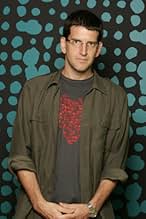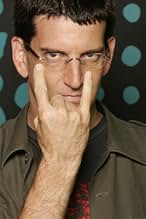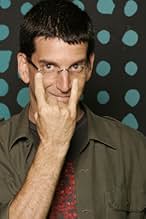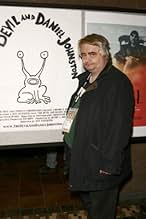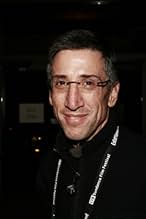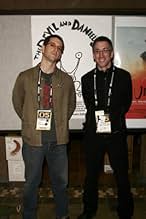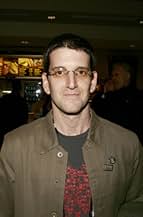IMDb-BEWERTUNG
7,9/10
10.679
IHRE BEWERTUNG
Füge eine Handlung in deiner Sprache hinzuDaniel Johnston, manic-depressive genius singer/songwriter/artist is revealed in this portrait of madness, creativity and love.Daniel Johnston, manic-depressive genius singer/songwriter/artist is revealed in this portrait of madness, creativity and love.Daniel Johnston, manic-depressive genius singer/songwriter/artist is revealed in this portrait of madness, creativity and love.
- Auszeichnungen
- 2 Gewinne & 3 Nominierungen insgesamt
Freddie Mercury
- Self
- (Archivfilmmaterial)
Handlung
WUSSTEST DU SCHON:
- WissenswertesAs seen in the DVD extras, Daniel and Laurie would meet again after 30+ years following a screening of this film. She said she kept every memento he gave her and was grateful that he always built up her self esteem and said so many nice things to her when they were friends. The two shared a beautiful moment with a nice hug when they saw each other again.
- Zitate
Daniel Johnston: I never met a girl I didn't meet.
- VerbindungenFeatured in Segundo aniversario (2007)
- SoundtracksSilly Love
Written by Daniel Johnston
Performed by Daniel Johnston
Published by Eternal Yip Eye Music (BMI)
Administered by BUG Music Publishing
Ausgewählte Rezension
Biodoc about Daniel Johnston, a multitalented man, a compulsively prolific cartoon artist, song writer and performer, whose bipolar disorder and drug abuse led to episodes of severe mental illness and destructive behaviors, beginning in his early 20s, in the 1980s, problems that stifled his career for many years, until consistent psychiatric care and kindly parental oversight effected a more stable course for him more recently. Now approaching age 45, Johnston has made a comeback of sorts, reaching a level of artistic self control and productivity that has swept him toward unprecedented recognition.
This film charts Johnston's life and family, ingeniously assimilating materials made by Johnston himself as a kid and young adult - super 8 and video footage; cassette audiotapes; still photos as well as contemporary video interviews and stills. By mid-adolescence he was holed up in the basement of his family's home, staying up all hours, writing songs, drawing, making tapes almost nonstop. By his mid-20s he had run away to Austin, Texas, and made a splash on the pop music scene there. But within a year or two, abetted by lots of marijuana and LSD, he began a series of horrendous manic and depressive episodes that scuttled his career, even as he was beginning to receive recognition locally and on a national level.
For much of the next 15 years Johnston was hospitalized frequently after extremely dangerous manic episodes (he seriously injured one acquaintance with a lead pipe, and later interfered with control of his father's small aircraft, leading to a crash landing that, luckily, both survived), zoned out on medications, and vegetating at the family home in Waller, Texas. But in the past few years his course has stabilized.
He's obese, the result of his mood stabilizing medications and inactivity no doubt, and he's no longer the flamboyant, zany free spirit that titillated and frightened so many of his followers in the past. But the film shows us that he is now in better control of his drawing and singing performances than he ever was years earlier. He has been helped immensely by his parents, Bill and Mabel, now in their early 80s, his agent and owner of a small recording company, Jeff Tartakov, and an Austin music journalist, Louis Black, all of whom have worked hard to help sustain and enhance Johnston's reputation as a creative artist.
Their loyal efforts have been well rewarded. The film demonstrates the success of a show of Johnston's more recent drawings at Gallery Zero One in Los Angeles, where over 90% of the works were sold to a single collector before the exhibition even opened. In 2003 Johnston sang before an audience in Sweden that obviously worshiped him. Cartoonist Matt Groening is a fan of Johnston's. Tom Waits and Beck, among many others, have covered his songs. And just a few weeks ago (subsequent to the film) the Whitney Museum in Manhattan announced that Johnston's works would be included in the 2006 Whitney Biennial.
From a psychiatric perspective, a good case can be made that Johnston does suffer from bipolar disorder. But he was compulsively creating art years before his first episode of mood disorder. Like Vincent Van Gogh and some other compulsive artists, Johnston may also have Asperger's Syndrome.
This film is very well crafted until near the end. Actually it seems as if the filmmakers really didn't know how or when to end it. There are a half dozen moments in the last 20 minutes when they could have done so. See more, including examples of Johnston's art work, at these websites: www.museumoflove.com and www.rejectedunknown.com/feature.htm. My grade: B+ 8/10.
This film charts Johnston's life and family, ingeniously assimilating materials made by Johnston himself as a kid and young adult - super 8 and video footage; cassette audiotapes; still photos as well as contemporary video interviews and stills. By mid-adolescence he was holed up in the basement of his family's home, staying up all hours, writing songs, drawing, making tapes almost nonstop. By his mid-20s he had run away to Austin, Texas, and made a splash on the pop music scene there. But within a year or two, abetted by lots of marijuana and LSD, he began a series of horrendous manic and depressive episodes that scuttled his career, even as he was beginning to receive recognition locally and on a national level.
For much of the next 15 years Johnston was hospitalized frequently after extremely dangerous manic episodes (he seriously injured one acquaintance with a lead pipe, and later interfered with control of his father's small aircraft, leading to a crash landing that, luckily, both survived), zoned out on medications, and vegetating at the family home in Waller, Texas. But in the past few years his course has stabilized.
He's obese, the result of his mood stabilizing medications and inactivity no doubt, and he's no longer the flamboyant, zany free spirit that titillated and frightened so many of his followers in the past. But the film shows us that he is now in better control of his drawing and singing performances than he ever was years earlier. He has been helped immensely by his parents, Bill and Mabel, now in their early 80s, his agent and owner of a small recording company, Jeff Tartakov, and an Austin music journalist, Louis Black, all of whom have worked hard to help sustain and enhance Johnston's reputation as a creative artist.
Their loyal efforts have been well rewarded. The film demonstrates the success of a show of Johnston's more recent drawings at Gallery Zero One in Los Angeles, where over 90% of the works were sold to a single collector before the exhibition even opened. In 2003 Johnston sang before an audience in Sweden that obviously worshiped him. Cartoonist Matt Groening is a fan of Johnston's. Tom Waits and Beck, among many others, have covered his songs. And just a few weeks ago (subsequent to the film) the Whitney Museum in Manhattan announced that Johnston's works would be included in the 2006 Whitney Biennial.
From a psychiatric perspective, a good case can be made that Johnston does suffer from bipolar disorder. But he was compulsively creating art years before his first episode of mood disorder. Like Vincent Van Gogh and some other compulsive artists, Johnston may also have Asperger's Syndrome.
This film is very well crafted until near the end. Actually it seems as if the filmmakers really didn't know how or when to end it. There are a half dozen moments in the last 20 minutes when they could have done so. See more, including examples of Johnston's art work, at these websites: www.museumoflove.com and www.rejectedunknown.com/feature.htm. My grade: B+ 8/10.
- roland-104
- 31. Mai 2006
- Permalink
Top-Auswahl
Melde dich zum Bewerten an und greife auf die Watchlist für personalisierte Empfehlungen zu.
- How long is The Devil and Daniel Johnston?Powered by Alexa
Details
Box Office
- Bruttoertrag in den USA und Kanada
- 334.450 $
- Eröffnungswochenende in den USA und in Kanada
- 23.192 $
- 2. Apr. 2006
- Weltweiter Bruttoertrag
- 432.339 $
- Laufzeit1 Stunde 50 Minuten
- Farbe
- Sound-Mix
- Seitenverhältnis
- 1.85 : 1
Zu dieser Seite beitragen
Bearbeitung vorschlagen oder fehlenden Inhalt hinzufügen

Oberste Lücke
What is the French language plot outline for The Devil and Daniel Johnston (2005)?
Antwort

